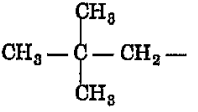Name the groups of fertilisers.
To answer the question "Name the groups of fertilizers," we can follow these steps:
1. Identify the Main Groups of Fertilizers: We need to list the different categories of fertilizers that are commonly recognized in agriculture.
2. List the Groups:
- Nitrogenous Fertilizers: These fertilizers are rich in nitrogen, which is essential for plant growth and development.
- Organic Fertilizers: These are derived from natural sources, such as plant or animal matter, and improve soil health.
- Phosphate Fertilizers: These fertilizers provide phosphorus, which is crucial for root development and flowering.
- Potassium Fertilizers: These contain potassium, which helps in overall plant health and disease resistance.
- Compound Fertilizers: These fertilizers contain two or more nutrients, combining nitrogen, phosphorus, and potassium.
- Complete Fertilizers: These fertilizers provide all three primary nutrients (N-P-K) in one formulation.
3. Summarize the Groups: The six main groups of fertilizers are:
- Nitrogenous Fertilizers
- Organic Fertilizers
- Phosphate Fertilizers
- Potassium Fertilizers
- Compound Fertilizers
- Complete Fertilizers
Final Answer:
The groups of fertilizers are:
1. Nitrogenous Fertilizers
2. Organic Fertilizers
3. Phosphate Fertilizers
4. Potassium Fertilizers
5. Compound Fertilizers
6. Complete Fertilizers
- Nitrogenous Fertilizers: These fertilizers are rich in nitrogen, which is essential for plant growth and development.
- Organic Fertilizers: These are derived from natural sources, such as plant or animal matter, and improve soil health.
- Phosphate Fertilizers: These fertilizers provide phosphorus, which is crucial for root development and flowering.
- Potassium Fertilizers: These contain potassium, which helps in overall plant health and disease resistance.
- Compound Fertilizers: These fertilizers contain two or more nutrients, combining nitrogen, phosphorus, and potassium.
- Complete Fertilizers: These fertilizers provide all three primary nutrients (N-P-K) in one formulation.
- Nitrogenous Fertilizers
- Organic Fertilizers
- Phosphate Fertilizers
- Potassium Fertilizers
- Compound Fertilizers
- Complete Fertilizers
The groups of fertilizers are:
1. Nitrogenous Fertilizers
2. Organic Fertilizers
3. Phosphate Fertilizers
4. Potassium Fertilizers
5. Compound Fertilizers
6. Complete Fertilizers
Topper's Solved these Questions
- IMPROVEMENT IN FOOD RESOURCES : PLANTSBOOK - CENGAGE BIOLOGYCHAPTER - IMPROVEMENT IN FOOD RESOURCES : PLANTSEXERCISE - MANDATORY EXERCISE (Exercise Set II)
20 Videos
- IMPROVEMENT IN FOOD RESOURCES : PLANTSBOOK - CENGAGE BIOLOGYCHAPTER - IMPROVEMENT IN FOOD RESOURCES : PLANTSEXERCISE - CONSOLIDATED EXERCISE
7 Videos
- IMPROVEMENT IN FOOD RESOURCES : PLANTSBOOK - CENGAGE BIOLOGYCHAPTER - IMPROVEMENT IN FOOD RESOURCES : PLANTSEXERCISE - CHALLENGING EXERCISE
4 Videos
- HEALTH, HYGIENE, AND DISEASES BOOK - CENGAGE BIOLOGYCHAPTER - HEALTH, HYGIENE, AND DISEASES EXERCISE - CHALLENGING EXERCISE
2 Videos
- TISSUES BOOK - CENGAGE BIOLOGYCHAPTER - TISSUES EXERCISE - CHALLENGING EXERCISE
2 Videos
Similar Questions
Knowledge Check
Name the group of islands lying in the Arabian Sea.
ALakshadweepBAndaman and NicobarCNicobarDAndaman
Name the organ where ova are formed inside the body. Trace their pathway from their formation to fertilisation. Name the organ where they go after fertilisation.
View SolutionName four groups of Eutherians?
View SolutionName the group of vascular cryptogams.
View SolutionName the alkyl group as represented below

View SolutionName the three major groups of protists.
View SolutionWhat are fertilisers?
View Solution(a) What is pollination ? State its significance
(b) How does fertilisation occurs in flowers ? Name the parts of the flower that develop into (i) seed and (ii) fruit after fertilisation.
View Solution
